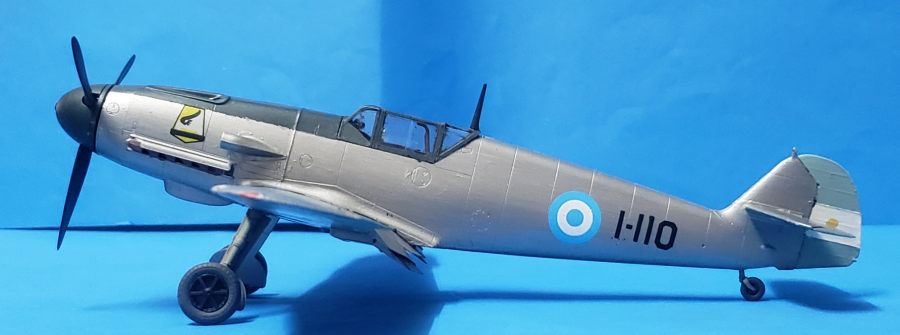
| KIT #: | 84146 |
| PRICE: | 76$ |
| DECALS: | Two options |
| REVIEWER: | Francisco Santoro |
| NOTES: | Weekend Edition. Fictitious scheme |

| HISTORY |
In order to keep Argentina as a "neutral" country, Germany sold us a batch of 10 Messerschmitt Bf 109F-4s, all of them brand new from the factory. As a requirement from the Argentinian Air Force, the 10 machines were stripped of their factory applied RLM 74/75/76 camouflage and left in bare metal, the only areas left in the original camouflage being the fabric covered surfaces and the nose, which was left in RLM 74 to serve as an anti-glare panel. The inner part of the left wing got an anti-skid area for the pilot to climb into the cockpit. The last detail for the aircraft was the addition of the Argentinian flag on the rudder.
All the Messerschmitts were issued to the recently created Grupo 5 de Caza (5th Fighter Group), stationed at Morón Air Base in Buenos Aires.
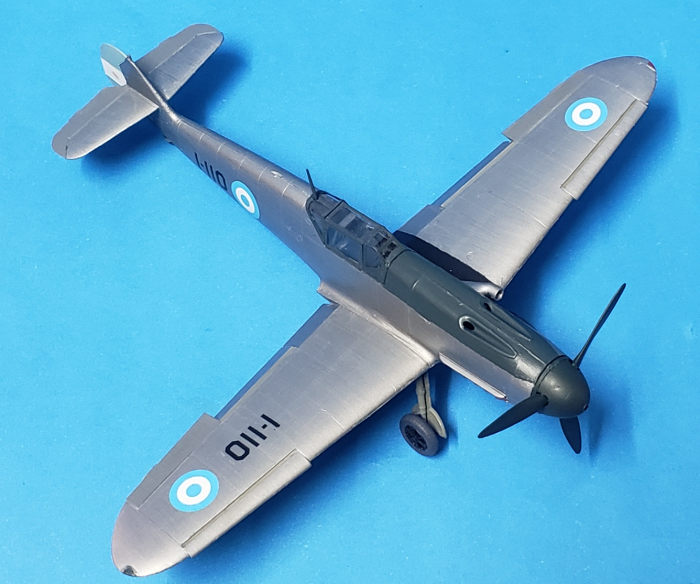 The ten Bf 109s were numbered I-101 to I-110. After the war, the
Argentinian Air Force scrapped the aircraft. No parts were preserved.
The ten Bf 109s were numbered I-101 to I-110. After the war, the
Argentinian Air Force scrapped the aircraft. No parts were preserved.
History (from Eduard):
"No other aircraft of the German Luftwaffe is so intimately connected with its rise and fall in the course of the Second World War than the Messerschmitt Bf 109. This type, by whose evolution outlived the era in which it was conceptualized, bore the brunt of Luftwaffe duties from the opening battles of Nazi Germany through to her final downfall. The history of the aircraft begins during 1934-35, when the Reich Ministry of Aviation formulated a requirement for the development of a single-engined monoplane fighter. Proposals were submitted by Arado, Heinkel, Focke-Wulf and Bayerische Flugzeugwerke.
The last mentioned firm featured a technical director named Professor Willy Messerschmitt, who was riding a wave of popularity based on the success of his recent liason aircraft, the Bf 108. His goal was to concei ve of an aircraft with the best possible performance for the specified weight, size, and aerodynamic qualities. Over the subsequent months, several prototypes were built that served first and foremost in development flights and further modifications. The aircraft was relatively small, and compared to the prevailing trends of the time, docile with revolutionary features such as low wing design, the use of a retractable landing gear, a wing with a very narrow profile, wing slats, landing flaps, weapons firing through the prop hub, and so on. Even the enclosed cockpit and the method of construction were not very common just four years prior to the beginning of the Second World War.
At its conception, the Bf 109 was a very promising asset despite some powerplant troubles. These were solved by the introduction of the DB 601. This engine, together with its extrapolated development DB 605, is umbilically connected to the types success. These two-row, twelve cylinder inverted V engines powered several tens of thousands of '109s in over 25 versions and variants.
The first combat use was by three developmental Bf 109s in the Spanish
Civil War, where they were delivered in December 1936. The pre-series airframes
were to, first of all, validate the aircraft's abilities in modern aerial
combat. Shortly thereafter, production machines in the form of the Bf 109B-1
began to reach 2./J.88, the Legion Condor. The desire of Germany to demonstrate
her aerial prowess to potential foes was advanced further in international sport
meets. The triumphs attained in Zurich in the summer of 1937 were complemented
several months later by grabbing the speed record of 610.95 kph. In very short
order, the progressive developments represented by the C, D and E versions
appeared. Despite this, the delivery
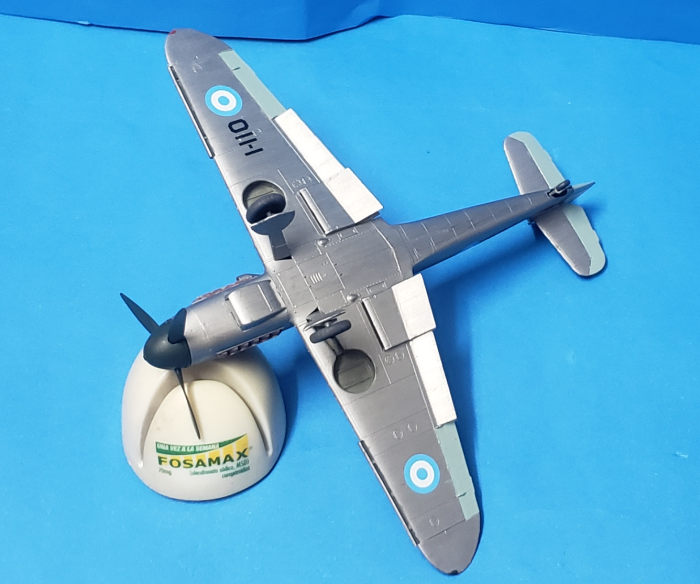 of the types to combat units did not sustain a rate that was desired by
military brass. Even by August 1938, the Bf 109 accounted for less than half of
the 643 front line fighters in service. The later months saw an increase in
these rates. By the time of the invasion of Poland (which saw the participation
of only a little more than 200 aircraft) the Luftwaffe possessed the best
fighter produced in continental Europe. With both a qualitative and quantitative
advantage, the fighter wing of the Luftwaffe entered the Polish campaign, the
first defenses of the Fatherland, Blitzkrieg against the West, and the Battle
for France. With one foot in the door that was the English Channel, the
Luftwaffe embarked on the attacks on Britain in the summer months of 1940.
of the types to combat units did not sustain a rate that was desired by
military brass. Even by August 1938, the Bf 109 accounted for less than half of
the 643 front line fighters in service. The later months saw an increase in
these rates. By the time of the invasion of Poland (which saw the participation
of only a little more than 200 aircraft) the Luftwaffe possessed the best
fighter produced in continental Europe. With both a qualitative and quantitative
advantage, the fighter wing of the Luftwaffe entered the Polish campaign, the
first defenses of the Fatherland, Blitzkrieg against the West, and the Battle
for France. With one foot in the door that was the English Channel, the
Luftwaffe embarked on the attacks on Britain in the summer months of 1940.
Here, the first weakness of the Bf 109 was revealed: the inability to carry drop tanks that would have enabled the type to effectively escort bombers to England. This was one of the factors that made the defeat of the Luftwaffe in the Battle of Britain possible. Experiences gained in 1940 led to the development of the 'F' version prior to the spring of 1941. The elegance of the Bf 109 crested with the 'Friedrich'. Following a largely defensive stance over the Channel and northern France, the Bf 109F took on a more offensive role in Operation Barbarossa in the east, and in northern Africa. In later duties with the 'Jagdwaffe' during the second phase of the war in the east, and in the 'Defense of the Reich' from 1943 to 1945, the Bf 109 served in the form of the 'G' version, followed by the 'K'. Even if by the end of the war it was clear that the development of the Bf 109 was exhausted, during its combat career, the type was able to keep pace with the foes that it encountered. Besides its primary function as fighter, the Bf 109 also appeared as a fighterbomber, reconnaissance platform, night fighter, trainer and rammjäger.
The disappearance of the Bf 109 from the skies over Europe was not spelled out by the end of the war. Several examples were in Swiss service up to 1949, and many flew in the air force of Czechoslovakia in both original form with a DB 605 powerplant and as aircraft built out of necessity with surplus Jumo 211s. The latter type also served as the first fighter to fight for the independence of the newly formed state of Israel. Finland retired the type as recently as 1954, and Spain didn't retire its HA-1109-1112, re-engined Bf 109s, until 1967. The legendary low-wing fighter of Professor Willy Messerschmitt survived the state that developed it."
| THE KIT |
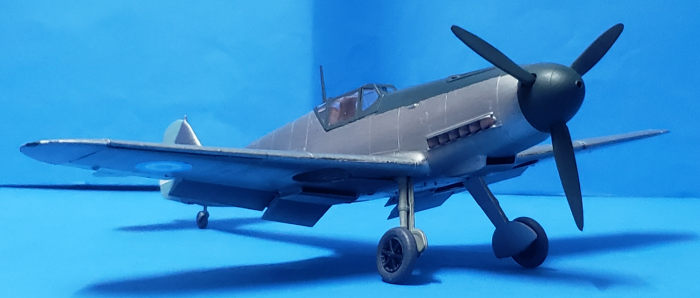 The model comes in a top opening box with three resealable bags inside.
There're four dark grey sprues and a single clear one. Parts are mostly flash
free, but some parts do have a minimal amount of flash.
The model comes in a top opening box with three resealable bags inside.
There're four dark grey sprues and a single clear one. Parts are mostly flash
free, but some parts do have a minimal amount of flash.
The box contains all the parts needed to make an F 109, but the sprues are labelled from F to K, so with the right fuselage, wings and clear parts, you can build a 109G in any of its variants.
There're two decal options provided: Max Helmuth Ostermann in the East, and Franz Schweiger in the North African front.
| CONSTRUCTION |
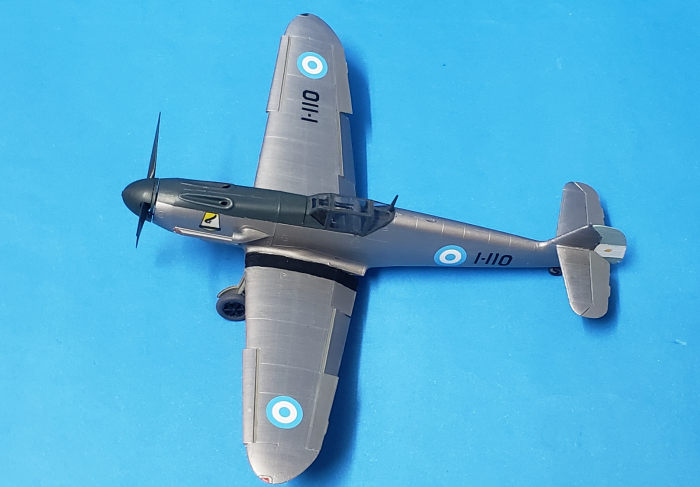 I began, as always, with the cockpit. All those parts were painted in
RLM 66 (Revell 78) first, and then picked out in either a metallic colour
(rudder pedals) or yellow with black (the fuel pipe inside the cockpit). I then
painted the instrument panel in RLM 66 with black dials. The instrument panel
was the accidentally dropped to the floor, and was found after a 15 minute
session of swearing and searching the floor with my phone's flashlight. After
finding the instrument panel, I glued it, alongside the cockpit, to one of the
fuselage halves. The exhausts were also glued to their respective left and right
sides. After that, I glued the tailwheel strut, and then glued fuselage halves
together. This was the first area of (small) fit issues, because the instrument
panel is too wide to fit into the opening, so that part was trimmed accordingly
and reglued. Once the fuselage halves were glued and taped, I added the
horizontal and vertical stablizers.
I began, as always, with the cockpit. All those parts were painted in
RLM 66 (Revell 78) first, and then picked out in either a metallic colour
(rudder pedals) or yellow with black (the fuel pipe inside the cockpit). I then
painted the instrument panel in RLM 66 with black dials. The instrument panel
was the accidentally dropped to the floor, and was found after a 15 minute
session of swearing and searching the floor with my phone's flashlight. After
finding the instrument panel, I glued it, alongside the cockpit, to one of the
fuselage halves. The exhausts were also glued to their respective left and right
sides. After that, I glued the tailwheel strut, and then glued fuselage halves
together. This was the first area of (small) fit issues, because the instrument
panel is too wide to fit into the opening, so that part was trimmed accordingly
and reglued. Once the fuselage halves were glued and taped, I added the
horizontal and vertical stablizers.
Once the cockpit was done, I worked on the wings. The radiator screens were painted in matt black, and the wheel wells (which Eduard provides as three pieces for left and right sides), were glued to the bottom wing. When I tried to dry fit the upper wings to the bottom one, I found out the frontal wheel well walls (seen from above and with the bottom wing facing forward) interfered with the fit, so those parts had to be sanded quite a bit so the upper wings could fit properly. Before gluing the upper wings, I glued to them their respective radiator flaps. When that was done, I glued the wings together. The flaps were then glued to the wings, together with the slats. The wings were then glued to the bottom of the cockpit, and set aside to dry.
| COLORS & MARKINGS |
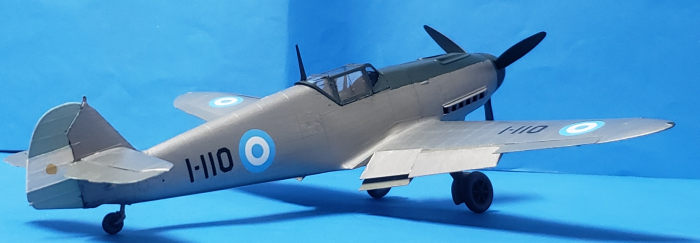 Knowing the metallic paint would have difficulties in covering the
bare plastic, I primed the surfaces first with Revell's Matt Black, and then
I brushed five coats of Revell's 91 Steel colour. The cowling received an
RLM 74 anti glare panel, the fabric control surfaces were painted in RLM 75
and 76 and the rudder was painted with the Argentinian flag colours. The
propeller was painted in RLM 70 (Revell 40). After the paint had cured and,
even though the metallic paint left a glossy surface, I applied two coats of
gloss varnish and placed the decals. These came from a Condor Decals 1:48
sheet for the Mirage IIIEA and CJ in the Argentinian Air Force. After
leaving the decals to dry for some time, I applied a matt varnish to the
entire aircraft.
Knowing the metallic paint would have difficulties in covering the
bare plastic, I primed the surfaces first with Revell's Matt Black, and then
I brushed five coats of Revell's 91 Steel colour. The cowling received an
RLM 74 anti glare panel, the fabric control surfaces were painted in RLM 75
and 76 and the rudder was painted with the Argentinian flag colours. The
propeller was painted in RLM 70 (Revell 40). After the paint had cured and,
even though the metallic paint left a glossy surface, I applied two coats of
gloss varnish and placed the decals. These came from a Condor Decals 1:48
sheet for the Mirage IIIEA and CJ in the Argentinian Air Force. After
leaving the decals to dry for some time, I applied a matt varnish to the
entire aircraft.
I painted the landing gear struts in RLM 02, the clear parts in RLM 74, and the wheels in Revell 78 tyres with black hubs. All these parts were glued to their respective places. The final touch was the antenna above the canopy.
| CONCLUSIONS |
28 June 2022 Copyright
ModelingMadness.com. All rights reserved. No reproduction in part or in whole
without express permission. If you would like your product reviewed fairly and fairly quickly, please
contact
the editor or see other details in the
Note to
Contributors.